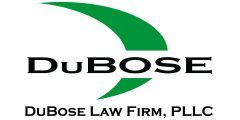The USS Shangri-La (CV-38) nicknamed “Tokyo Express,” was ordered for the U.S. Navy during World War II. Her keel was laid down at Norfolk Naval Shipyard on January 15, 1943. She was launched on February 24, 1944 and commissioned on September 15, 1944 under the command of Captain James D. Barner.
USS Shangri-La arrived at Pearl Harbor on February 15, 1945, where she spent two months performing carrier qualifications. In April, she joined Vice Admiral Marc A. Mitscher’s Fast Carrier Task Force, joining Task Group 58.4 on April 24. On April 25, she launched her first air strike against the Japanese at Okino Daito Jima. She then flew combat air patrols and provided close air support for operations at Okinawa until mid-May.
On May 18, the USS Shangri-La became the flagship of Vice Admiral John S. McCain, Sr., Commander Carrier Task Force 2. As part of Task Group 58.4, which became Task Group 38.4, she launched strikes against the Japanese home islands in June. Her air crew suffered heavy casualties as they met with strong resistance from the Japanese.
The USS Shangri-La sailed northwest to avoid a typhoon on June 4 and 5 before returning the next day to provide close air support over Okinawa. She supported operations at Okinawa until June 10, when she moved on to Leyte Gulf, where she underwent a period of upkeep and recreation. The carrier returned to battle on July 1, and she hosted the oath of office ceremony for Assistant Secretary of the Navy for Air John L. Sullivan the following day. This was the first time such a ceremony ever took place in a combat zone.
Throughout July and up until the surrender in August, aircraft from the USS Shangri-La conducted a series of air strikes against the home islands of Japan. She struck at Tokyo, Honshu, Hokkaido, and Kure. After the surrender on August 15, the aircraft carrier remained to patrol the waters around Honshu and drop supplies to POW camps.
After World War II, USS Shangri-La operated out of San Diego for carrier qualifications. She took part in Operation Crossroads in May 1946, the atomic testing at Bikini Atoll. The aircraft carrier was decommissioned on November 7, 1947, but she was recommissioned on May 10, 1951 under the command of Captain Francis L. Busey.
USS Shangri-La was reclassified as an attack carrier, CVA-38, in 1952. After conducting training exercises, she was decommissioned again to undergo modernization at Puget Sound Naval Shipyard from November 14, 1952 until January 10, 1955.
The USS Shangri-La took part in training exercises and Western Pacific deployments until 1960, when she sailed from San Diego to her new homeport in Mayport on March 16. She was deployed to the Atlantic, participating in NATO exercises. The carrier headed to the Caribbean when trouble began in Guatemala and Nicaragua, returning home on November 25.
Until the 1970s, the USS Shangri-La operated out of Mayport and spent several deployments with the Sixth Fleet in the Mediterranean. She was accidentally rammed by destroyer USS Newman K. Perry during war games in 1965. No one on the carrier was injured, but the ship required extensive overhaul. She was redesignated as an antisubmarine warfare carrier, CVS-38, on June 30, 1969.
USS Shangri-La joined Vietnam War operations in 1970, conducting combat sorties from Yankee Station from April until November, with occasional logistics trips to Subic Bay. She returned home to be decommissioned on July 30, 1971. The aircraft carrier was removed from the Naval Vessel Register on July 15, 1982 and sold for scrap on August 9, 1988. She earned two battle stars for her service in World War II and three battle stars in the Vietnam War.
Like every other ship from the World War II era, the USS Shangri-La was constructed from asbestos-containing components. Asbestos was known for its resistance to corrosion, fire, heat, and water, so it was used in nearly every area of the ship and in the aircraft she carried. Because of this, anyone who served on or around the aircraft carrier was put at risk of developing asbestos-related illnesses like mesothelioma, asbestosis, and lung cancer.
USS Shangri-La workers should monitor their health carefully, and consult a doctor if they experience any symptoms associated with mesothelioma. Anyone who worked on or around the USS Shangri-La, and is diagnosed with mesothelioma, should also consider contacting a lawyer to discuss their legal rights.
